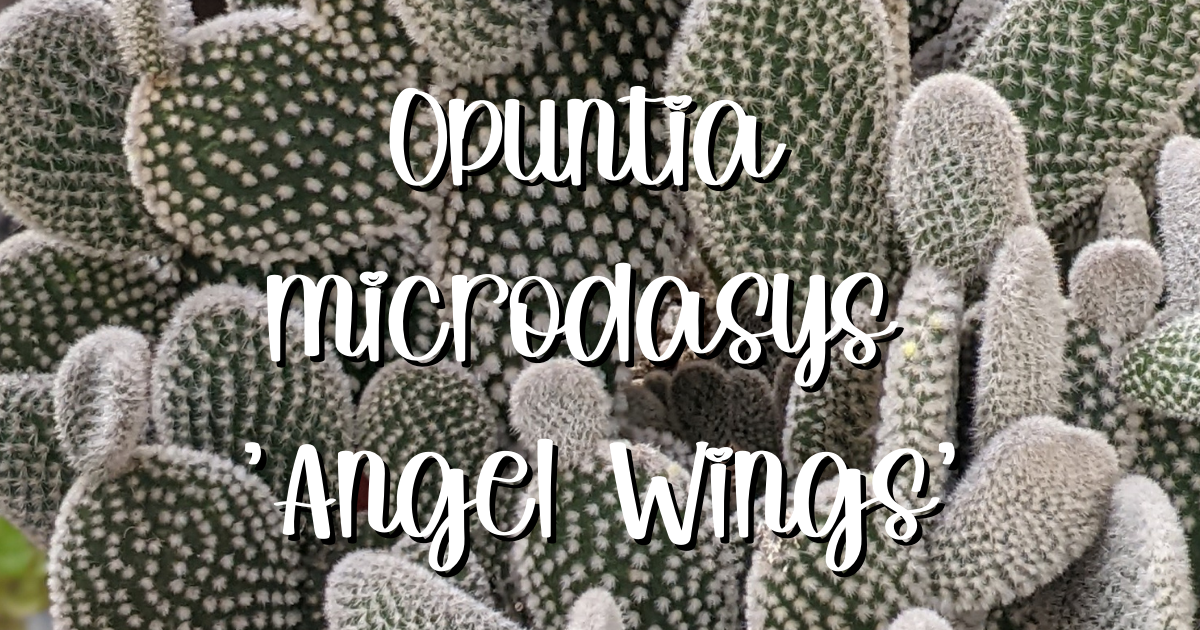Opuntia microdasys ‘Angel Wings’, commonly known as the Bunny Ear Cactus or Polka Dot Cactus, is a popular succulent with cute and distinctive pad-shaped leaves covered in white or yellow spines that resemble bunny ears. This succulent can grow up to 2 feet tall and 3 feet wide, making it a statement piece in any garden or indoor space. Here’s everything you need to know to care for this plant.
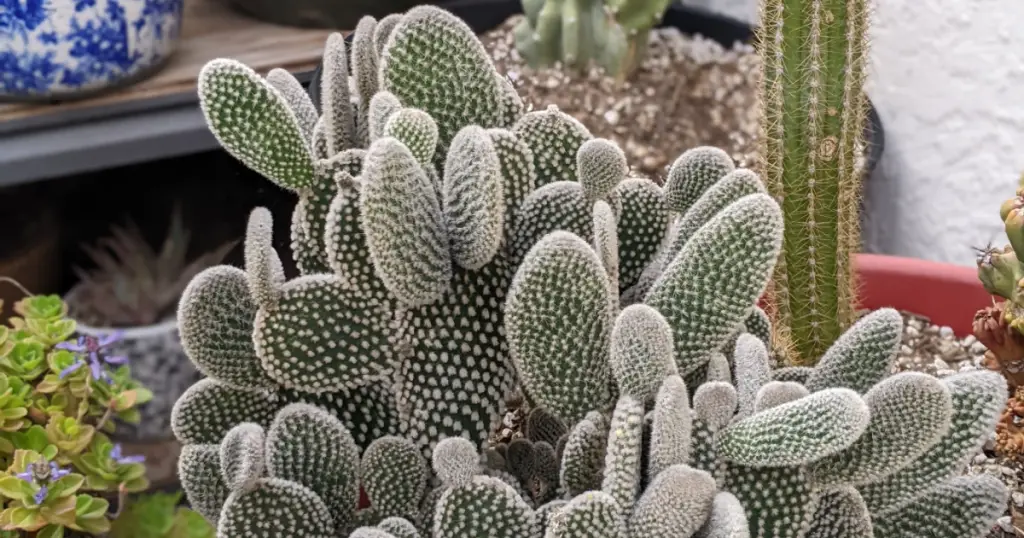
Native Habitat of Opuntia microdasys ‘Angel Wings’
Opuntia microdasys ‘Angel Wings’ is a species of cactus that belongs to the family Cactaceae. It is native to Central and Northern Mexico and can be found growing in a variety of habitats, including deserts, semi-arid regions, and rocky slopes. This plant is well adapted to surviving in arid environments, where water is scarce and temperatures are high.
In the wild, Opuntia microdasys ‘Angel Wings’ can grow up to 3 feet tall and 6 feet wide. It is a shrubby, branching cactus with flattened, jointed pads covered in small, hair-like spines called glochids. These spines serve to protect Opuntia microdasys ‘Angel Wings’ from predators and also help to reflect sunlight, reducing water loss through transpiration. The cactus is also capable of photosynthesis through its green pads, which allows it to produce energy even in low light conditions.
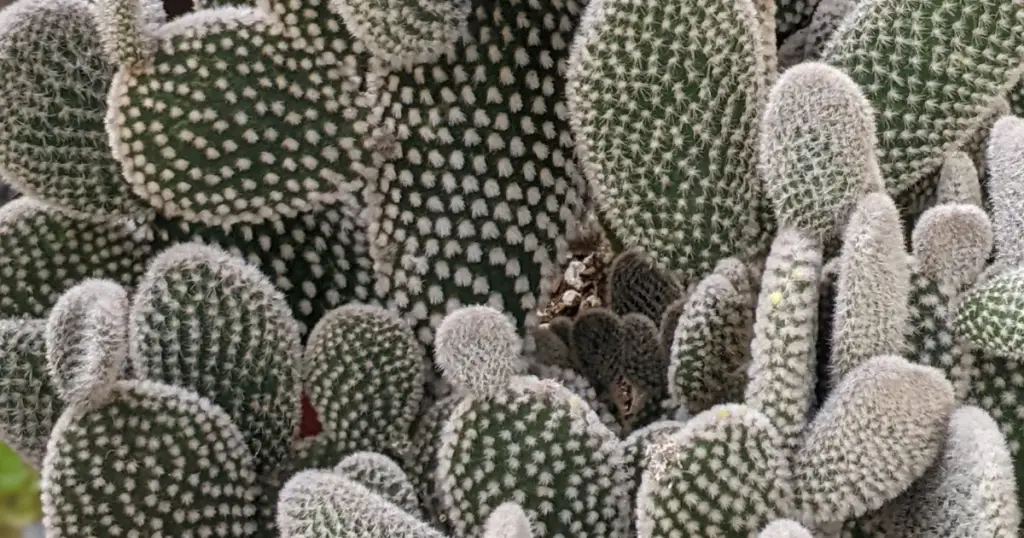
You might also like: 10 Cactus and Succulent Adaptations: How These Incredible Plants Have Adapted to Survive in Extreme Environments
How to Water Opuntia microdasys ‘Angel Wings’
When watering Opuntia microdasys ‘Angel Wings’, it’s important to give it a thorough soak and then let the soil dry out completely before watering again. The plant can survive for long periods without water, making it ideal for those who may forget to water their plants regularly. During the winter months, reduce watering to once a month or less as the plant goes into dormancy. It’s also important to avoid getting water on the foliage, as this can lead to rot or fungal diseases. If water does get on the plant, gently pat it dry with a clean cloth or tissue so you don’t end up with an overwatered cactus.
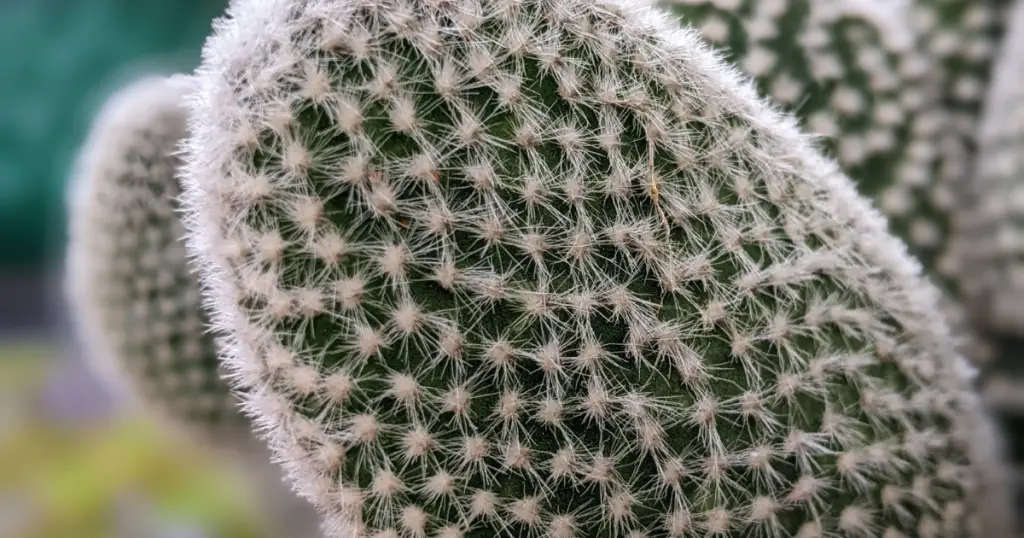
You might also like: How & When to Water Succulents So They Don’t Die
Opuntia microdasys ‘Angel Wings’ Soil
It’s important to note that Opuntia microdasys ‘Angel Wings’ is tolerant of slightly acidic to slightly alkaline soil, with a pH range of 6.0 to 7.5. The soil should be kept slightly moist during the growing season, but be careful not to overwater, as this can cause root rot. Allow the soil to dry out slightly between waterings, and reduce watering during the dormant season. Make sure the pot has drainage holes to prevent water from sitting in the soil.
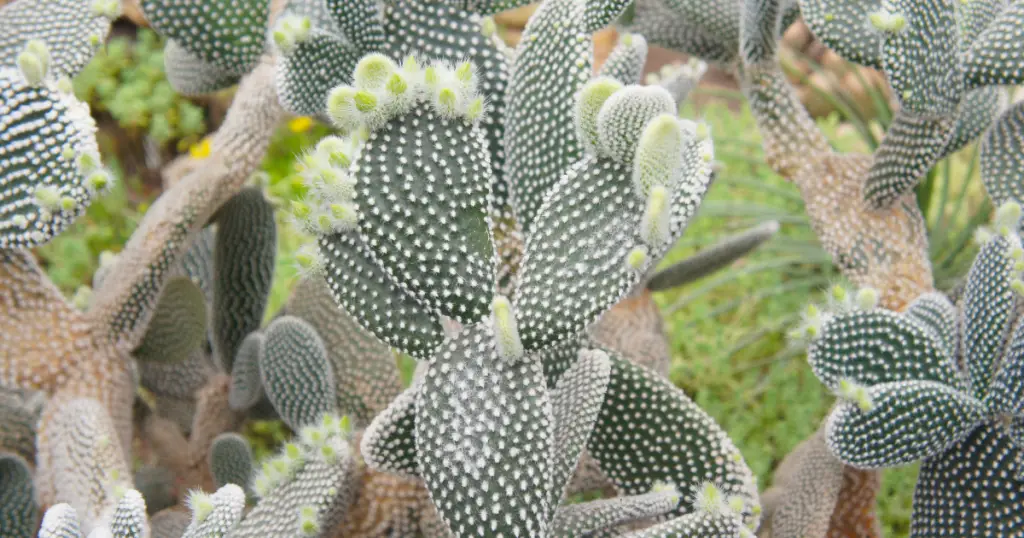
You might also like: Succulent Soil: Ultimate Guide & 4 DIY Recipes to Keep Your Succulents Happy and Healthy
How to Propagate Opuntia microdasys ‘Angel Wings’
To propagate Opuntia microdasys ‘Angel Wings’ from stem cuttings, select a healthy stem and make a clean cut at a 45-degree angle. Leave the cutting in a dry, shaded area for a few days until the cut end has dried and formed a callus. This helps prevent rot when planted in soil. Once the cutting has calloused over, plant it in well-draining soil and water it lightly. Be careful not to overwater, as this can cause the cutting to rot.
You might also like: Propagating Succulents 4 Ways: The Best Guide Ever
Place the pot in a bright, warm spot but avoid direct sunlight. It is important to note that Opuntia microdasys ‘Angel Wings’ grows relatively slowly, so it may take some time for the new plant to establish and develop roots. Once it has rooted, continue to water the plant sparingly until it has fully adapted to its new environment.
You might also like: Caring for Succulents While on Vacation
Light
Opuntia microdasys ‘Angel Wings’ requires a lot of light to thrive. It is best to place the plant in a location that receives at least six hours of bright, indirect sunlight per day. If you are growing it indoors, place it near a south-facing window or under a grow light that provides bright, indirect light.
You might also like: How Much Light Do Succulents Need? A Comprehensive Guide in 12 Parts
It is important to note that the Opuntia microdasys ‘Angel Wings’ can also tolerate some direct sunlight. However, you should be careful not to expose it to too much direct sunlight, as this can cause sunburn and damage to the plant. If you notice any signs of sunburn, such as brown spots or discoloration on the leaves, move the plant to a shadier location and reduce its exposure to direct sunlight.
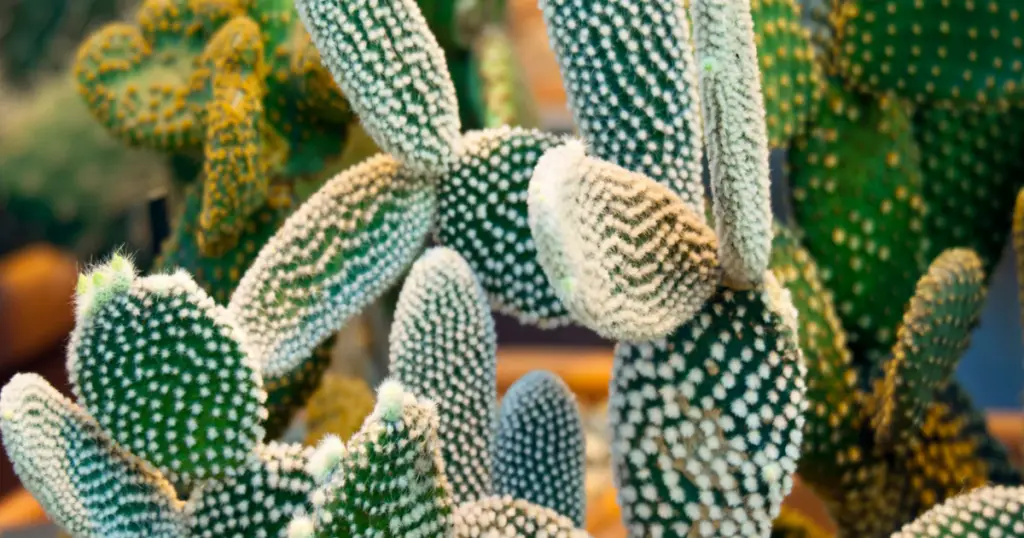
You might also like: Repotting Succulents: The Best Time to Repot Your Plants and 3 Ways to Tell When It’s Time
Fertilizer
Opuntia microdasys ‘Angel Wings’ does not require fertilizer, but can benefit from occasional feedings during the growing season. Use a balanced, water-soluble fertilizer and dilute it to half-strength before applying.
You might also like: Succulent Fertilizer: The Ultimate Guide to Healthy Succulents + 8 DIY Fertilizer Recipes
Opuntia microdasys ‘Angel Wings’ Common Problems and Solutions
Overwatering can also be an issue for Opuntia microdasys ‘Angel Wings’. It’s important to make sure the soil is completely dry before watering, and to avoid getting water on the leaves or stem. If the plant shows signs of root rot, such as yellowing or mushy stems, stop watering immediately and trim away any affected areas. Repotting in fresh, well-draining soil can also help prevent future issues.
You might also like: 12 Succulent Pests and Diseases: Identification, Treatment, and Easy Prevention of Mealybugs, Thrips and More
Another problem that can occur with Opuntia microdasys ‘Angel Wings’ is damage to the pads from handling or environmental factors such as wind or hail. If a pad becomes damaged, it’s best to trim it away with a clean, sharp tool to prevent further damage or infection. However, the plant is generally quite resilient and can recover from minor damage with proper care.
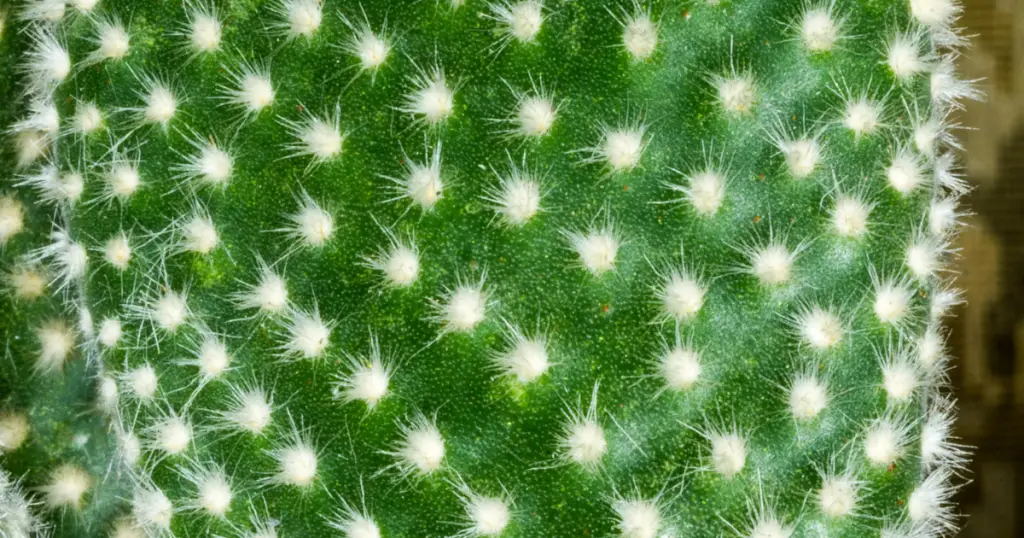
You might also like: Drainage Hole at the Bottom of The Pot: Do Succulents Need Them? The Answer Might Completely Shock You!
Hardiness Zone and Temperature
It is important to note that the Opuntia microdasys ‘Angel Wings’ is a heat-loving succulent and thrives in warm temperatures. It can tolerate temperatures up to 100°F (37.8°C) without any problem. However, it is crucial to protect it from extreme heat by providing shade during the hottest part of the day. In areas with hot and dry climates, it is advisable to water Opuntia microdasys ‘Angel Wings’ more frequently to prevent dehydration.
You might also like: Succulent Care by Zones
On the other hand, the Opuntia microdasys ‘Angel Wings’ is not frost-hardy and cannot survive in temperatures below 25°F (-3.9°C). Therefore, if you live in areas with temperatures below this, you should consider growing it indoors or in a greenhouse. During the winter months, it is advisable to keep the plant dry to prevent root rot. If grown outdoors, it is essential to cover the plant with frost blankets or burlap to protect it from frostbite. By taking the necessary measures to protect your Opuntia microdasys ‘Angel Wings’ from extreme temperatures, you can enjoy a healthy and thriving plant for years to come.
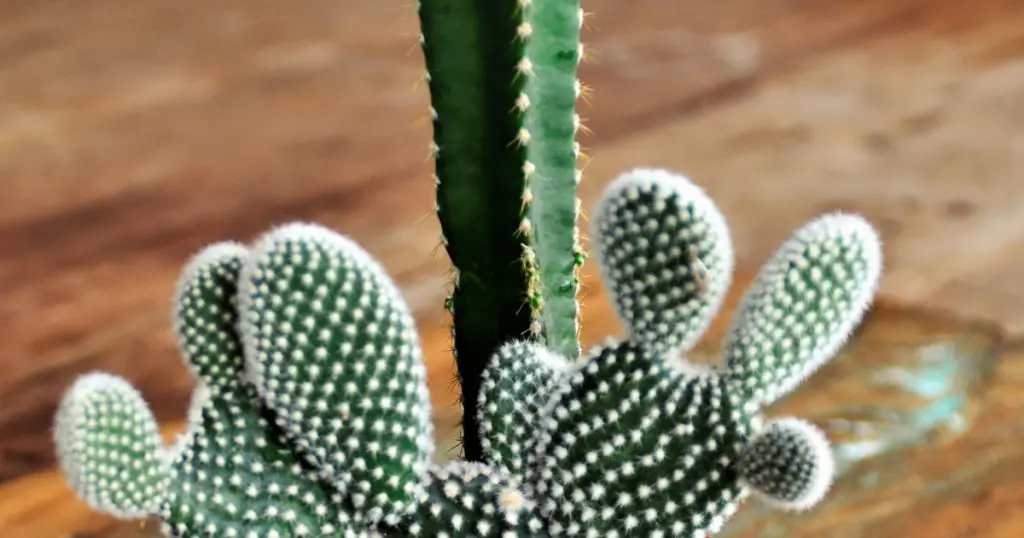
You might also like: Sunburnt Succulents

Where to Buy Succulents Online

